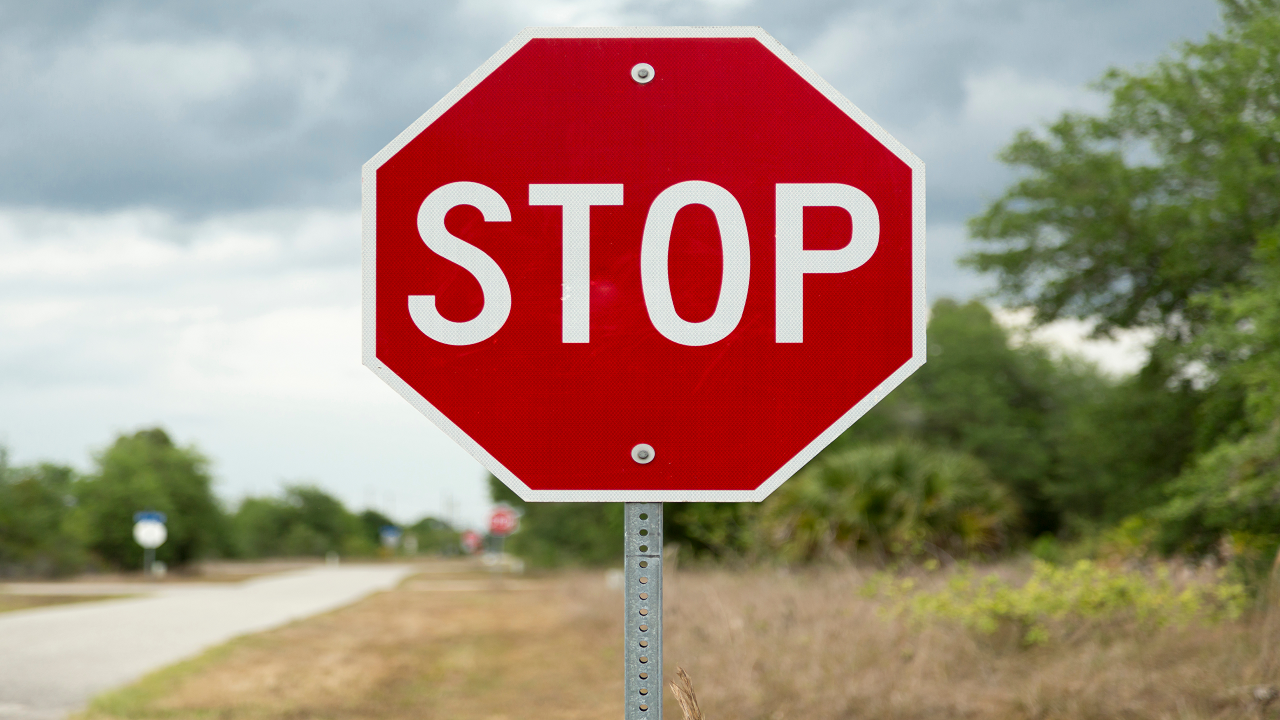The Emergency Stop
The emergency stop is a procedure every learner will have to learn and perfect for their driving test. One-third of all learners will be asked to conduct this during their test. Therefore, it’s important you’ve practised it and can perform it to be the best of your abilities.
Emergency Stop in the Driving Test
If during the driving test, the examiner chooses to conduct an emergency stop, they’ll ask you to pull up on the left. Once you’ve safely stopped with the handbrake on, and the car in neutral, the examiner will inform you of the procedure.
Instructions on the Emergency Stop
The examiner will explain that they’re going to give you a signal to stop the car as if it was an emergency situation and you had to immediately apply the brakes. The signal will likely be the examiner stating the word “stop”, as well as a hand signal consisting of them raising their palm, just under the interior mirror. The examiner will also explain that they will be checking whether it’s safe behind you to suddenly stop. They will be checking over their shoulder, however, you should not use this as a signal to stop. As the examiner may do this multiple times if it’s not safe in that moment. It’s important that you only stop when the signal is given, as it may not be safe to stop at any other moment.
What is the Driving Examiner is Looking For?
The examiner will be looking for three key objectives throughout this procedure.
- Speed – fast reaction times from releasing the accelerator to applying the brake and the clutch
- Control- bringing the car to a quick and safe stationary position whilst maintaining good control of the vehicle.
- Observations – you’ll need to observe the road around you before pulling off after you’ve conducted the stop
The procedure will be conducted on a quiet 30mph road to minimise disruption to other drivers. If there are any pedestrians, cyclists or other vehicles in the vicinity, it’s likely that the examiner will call off the emergency stop or may perform it later on.
Once the examiner gives the hand signals, release your foot off the accelerator and quickly move to the brake and apply. Never stamp on the brake as hard as you can, instead apply it firmly whilst keeping both hands on the steering wheel in order to maximise your control of the car. You will not skid as most modern cars are fitted with a safety feature known ABS, anti-break locking system. In most conditions, it will prevent the wheels from locking, allowing you as the driver to maintain control.
Signalling before the stop
A common question many learns have is whether they should apply their signals to alert other drivers to the sudden stop. The answer is no, realistically, you’ll never have time to apply your signal in the real world stop. Furthermore, the driver must have both hands on the wheel at all times in order to maintain control of the vehicle. If you were to indicate during it, it’s likely the examiner will fail you. However, it’s okay to signal after you’ve stopped, to indicate you moving off.
Brake then clutch
A key thing to remember while conducting this is to apply the clutch at the very last second. Pressing down on the clutch too early will lead to coasting. This isn’t advisable as it reduces control of the car and makes braking less effective due to disconnecting the engine from the wheels.
Moving off after the Emergency Stop
Once you’ve successfully stopped, the examiner will inform you that they won’t be asking you to do it again, and to move off when ready. This is another important section of the procedure, as the examiner will be checking your observation skills. If your car is stationary in the middle of the road, you should check both left and right blind spots before moving off.
Most common mistakes
The main reasons for failing your test due to the emergency stop are:
- Mirrors- these should be checked before applying the brake
- Coasting- applying the clutch too early should be avoided until the very last moment
- Not stopping soon enough
- Wheels locking, resulting in the car skidding
In conclusion, it’s important to have practised this before you take your driving test. Whilst it’s relatively simple to perform, you’re likely to have to be able to conduct in during real-world driving for a magnitude of different reasons. Therefore, understanding how to stop in the quickest time, whilst also maintaining control is an important skill to learn. Why not improve your driving and increase your chances of passing the driving test by visiting our Youtube Channel.

